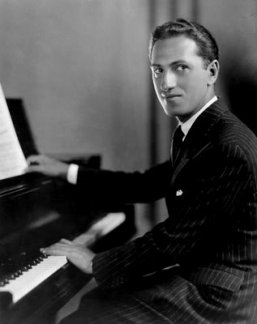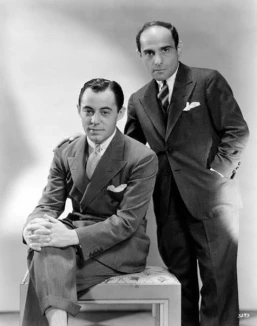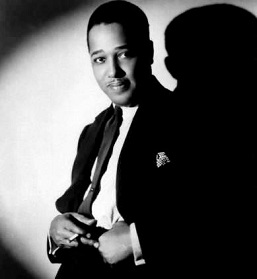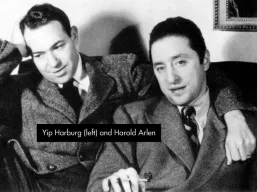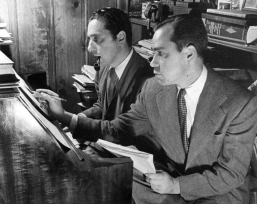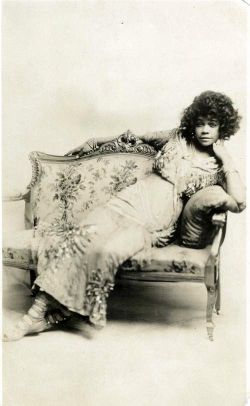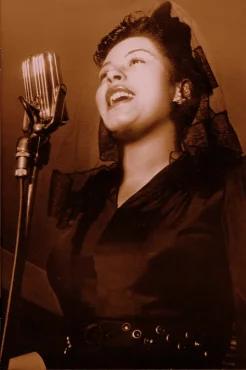Cole Porter, part 1: standards and selected hits, 1928-34
_____________________
This page contains:
- Cole Porter, part 1: standards and selected hits 1928-34
- 1928 – Let’s Do It (Let’s Fall in Love) – Paris
- 1929 – What Is This Thing Called Love? – Wake Up and Dream
- 1929 – You Do Something to Me – Fifty Million Frenchmen
- 1930 – Love for Sale – The New Yorkers
- 1932 – After You, Who? – Gay Divorce
- 1932 – Night and Day – Gay Divorce
- 1934 – Cole Porter: selections from Anything Goes (1934)
- I Get a Kick Out of You
- Anything Goes
- You’re the Top
- All Through the Night – separate page
- 1934 – Don’t Fence Me In – Adios, Argentina
See also the following Cole Porter pages on Songbook:
- Porter, Cole – index of Cole Porter pages
- Cole Porter, part 2: selected standards 1935-1939 + photo gallery
- 1935 – Begin the Beguine – Jubilee / film Broadway Melody of 1940 (1940)
- 1935 – Just One of Those Things – Jubilee / film Broadway Melody of 1940 (1940)
- 1936 – I’ve Got You Under My Skin – film Born to Dance
- 1936 – Easy to Love – film Born to Dance
- 1938 – My Heart Belongs to Daddy – Leave It to Me!
- Cole Porter, part 3: selected standards 1940-1949
- 1944 – I Love You – Mexican Hayride
- 1948 – So In Love – Kiss Me Kate
- Cole Porter gallery
_________________________
Paris – 1928
Let’s Do It (Let’s Fall in Love) (Cole Porter) — The song was introduced in the Broadway musical Paris which included five Porter compositions (several others were dropped before the New York opening).
B.A. Rolfe and his Palais D’or Orchestra – 1928
.
Bill Wirges and his Orchestra – 1928 — Discogs.com says:
William (Bill) Wirges was Harry Reser‘s pianist, arranger and assistant conductor. On all Pathé Actuelle and Perfect (3) recordings through early 1927, the Wirgis and Reser orchestras are identical. Many recordings credited to Bill Wirges And His Orchestra on US releases were credited to Harry Reser & His Orchestra in other countries.
.
Lee Morse and her Blue Grass Boys – recorded 7 December 1928
.
Kim Basinger – in the film The Marrying Man (1991)
_________________________
separate feature pages:
1929
 Wake Up and Dream – What Is This Thing Called Love?
Wake Up and Dream – What Is This Thing Called Love?
Fifty Million Frenchmen – You Do Something to Me
1930
The New Yorkers – Love for Sale
_______________________
Gay Divorce – 1932
(above) Fred Astaire with Claire Luce in Gay Divorce (1932), and with Ginger Rogers in The Gay Divorcee (1934)
Gay Divorce — credits and “background” adapted from Wikipedia:
 Music and lyrics by Cole Porter and book by Dwight Taylor, adapted by Kenneth Webb and Samuel Hoffenstein. It was Fred Astaire’s last Broadway show and featured the hit song “Night and Day” in which Astaire danced with co-star Claire Luce. RKO Radio Pictures adapted it into a musical film in 1934, starring Fred Astaire and Ginger Rogers, and renamed The Gay Divorcee.
Music and lyrics by Cole Porter and book by Dwight Taylor, adapted by Kenneth Webb and Samuel Hoffenstein. It was Fred Astaire’s last Broadway show and featured the hit song “Night and Day” in which Astaire danced with co-star Claire Luce. RKO Radio Pictures adapted it into a musical film in 1934, starring Fred Astaire and Ginger Rogers, and renamed The Gay Divorcee.
Astaire’s sister Adele retired from show business and married Lord Charles Cavendish after her last show with Fred, The Band Wagon (1931). When the producers of Gay Divorce asked Fred to star in the show, he deferred an answer until he could spend the summer of 1932 wooing his future wife, Phyllis, in London. He finally agreed, and rehearsals began in September 1932. The show was both Astaire’s last Broadway musical (after which he moved to Hollywood) and also his only stage musical without Adele. Also in the cast were Erik Rhodes and Eric Blore who soon became famous in the early 1930s RKO comedies.
Gay Divorce opened in pre-Broadway tryouts at the Wilbur Theatre, Boston on November 7, 1932 and then moved to the Shubert Theatre, New Haven on November 21, 1932. It opened on Broadway at the Ethel Barrymore Theatre on November 29, 1932 and transferred to the Shubert Theatre on January 16, 1933 and closed on July 1, 1933 for a total run of 248 performances. Directed by Howard Lindsay with choreography by Barbara Newberry and Carl Randall, and set design by Jo Mielziner, the cast featured Fred Astaire as Guy Holden, Claire Luce as Mimi, Luella Gear as Hortense, G. P. Huntley Jr as Teddy, Betty Starbuck as Barbara Wray, Erik Rhodes as Tonetti, Eric Blore as Waiter, and Roland Bottomley as Pratt.
_____________________
popular songs from the Broadway musical Gay Divorce:
After You, Who?
Henry Hall and the BBC Dance Orchestra, vocal: Les Allen — c. 1933
.
Fred Astaire — date unknown
.
Jody Watley – 1990
____________________
Night and Day
From Wikipedia:
It is perhaps Porter’s most popular contribution to the Great American Songbook and has been recorded by dozens of artists. Fred Astaire introduced “Night and Day” on stage, and his recording of the song was a #1 hit. He performed it again in the 1934 film version of the show, renamed The Gay Divorcee, and it became one of his signature pieces.
Porter was known to claim that the Islamic call to worship he heard on a trip to Morocco inspired the song.
The song was so associated with Porter that when Hollywood first filmed his life story in 1946, the movie was entitled Night and Day.
_________________________
Leo Reisman and his Orchestra, vocal: Fred Astaire — 1932
.
Fred Astaire sings the song to Ginger Rogers in the RKO film Gay Divorcee (1934)
.
Maxine Sullivan — 1938
.
.
Frank Sinatra — recorded on 19 January 1942, arranged by Axel Stordahl, the first of eight recordings on seven session from 1942 to 1977, according to blue-eyes.com. The Youtube provider indicates that this recording date was also his first solo recording session for RCA.
.
(below) in the 1943 film Reveille With Beverly
.
Sérgio Mendes and Brasil ’66 – from their second album, Equinox – 1967
__________________
Anything Goes – 1934
Visit our separate page Cole Porter: four standards from the musical Anything Goes, 1934, featuring:
- “I Get a Kick Out of You”
- “Anything Goes”
- “You’re the Top”
- “All Through the Night” — separate page
______________________
Adios, Argentina – 1934
Don’t Fence Me In – music by Cole Porter, lyrics by Robert Fletcher and Cole Porter
From Wikipedia:
 Originally written in 1934 for Adios, Argentina, an unproduced 20th Century Fox film musical, “Don’t Fence Me In” was based on text by a poet and engineer with the Department of Highways in Helena, Montana, Robert (Bob) Fletcher. Cole Porter, who had been asked to write a cowboy song for the 20th Century Fox musical, bought the poem from Fletcher for $250. Porter reworked Fletcher’s poem, and when the song was first published, Porter was credited with sole authorship. Porter had wanted to give Fletcher co-authorship credit, but his publishers did not allow that. After the song became popular, however, Fletcher hired attorneys who negotiated his being given co-authorship credit in subsequent publications. Although it was one of the most popular songs of its time, Porter claimed it was his least favorite of his own compositions.[1]
Originally written in 1934 for Adios, Argentina, an unproduced 20th Century Fox film musical, “Don’t Fence Me In” was based on text by a poet and engineer with the Department of Highways in Helena, Montana, Robert (Bob) Fletcher. Cole Porter, who had been asked to write a cowboy song for the 20th Century Fox musical, bought the poem from Fletcher for $250. Porter reworked Fletcher’s poem, and when the song was first published, Porter was credited with sole authorship. Porter had wanted to give Fletcher co-authorship credit, but his publishers did not allow that. After the song became popular, however, Fletcher hired attorneys who negotiated his being given co-authorship credit in subsequent publications. Although it was one of the most popular songs of its time, Porter claimed it was his least favorite of his own compositions.[1]
The Wikipedia song history may be fairly accurate up to that point, but it definitely veers from the truth in the following paragraph:
The Fletcher poem used would seem to be “Open Range,” contained in his 1934 book Coral Dust. The final couplet is “And turn me loose on my cayuse, But please don’t fence me in.” Apart from that, the rest of the lyrics appear to be Cole’s invention, unless he utilized other material from the book.[2]
First, it was not Fletcher’s “Open Range” that Porter adapted, but a lyric written by Fletcher in 1934. Second, Porter used a lot more than a single couplet of the Fletcher original, as I will demonstrate below. Fletcher wrote the lyric at the request of the Hollywood producer Lou Brock (who’d been assigned to the film Adios Argentina, which ultimately remained unproduced) for a cowboy song of the title Don’t Fence Me In.
Within a long quote from the book The Complete Lyrics of Cole Porter, ed. Robert Kimball, 1983), found in a thread at Mudcat Café, Kimball says that Brock had received a copy of a book of verse by Fletcher a month prior to his request. Fletcher’s lyric “Don’t Fence Me In,” written in 1934, is thematically derived from his earlier poem “Open Range,” published in 1934; the two share the theme of preferring the clean and wide open spaces of the country to the grime and crowdedness of the city. The Fletcher lyric also inherits a few phrases from his poem: “turn me loose,” “on my cayuse,” and “don’t fence me in.”
Here is a link to Fletcher’s 1934 poem “Open Range” (at cowboypoetry.com).
Here is Fletcher’s 1934 “Don’t Fence Me In” lyric (from “The Complete Lyrics of Cole Porter”, via the Mudcat Café thread cited above):
Don’t fence me in.
Give me land, lots of land,
Stretching miles across the West,
Don’t fence me in.
Let me ride where it’s wide,
For somehow I like it best.
I want to see the stars,
I want to feel the breeze,
I want to smell the sage,
And hear the cottonwood trees.
Just turn me loose,
Let me straddle my old saddle
Where the shining mountains rise.
On my cayuse
I’ll go siftin’: I’ll go driftin’
Underneath those Western skies.
I’ve got to get where
The West commences
I can’t stand hobbles
I can’t stand fences,
Don’t fence me in.
Kimball affirms that Porter had agreed to credit to Fletcher as co-songwriter. Porter altered the original Fletcher lyric significantly, but retained many key phrases exactly as written by Fletcher.
Among the phrases which are identical in the Fletcher original and Cole Porter’s rewrite are the following:
1. Don’t fence me in
2. Give me land, lots of land
3. cottonwood trees
4. Let me straddle my old saddle
5. mountains rise
6. Just turn me loose
7. On my cayuse
8. where the West commences
9. I can’t stand fences
modified phrases:
1. “I can’t stand hobbles” becomes “I can’t look at hobbles”.
2. “Let me ride where it’s wide” is modified to “Let me ride through the wide…”
3. “And hear the cottonwood trees” is expanded to “And listen to the murmur of the cottonwood trees”
Also, images, and sensations employed in the Porter version are in debt to the original. Each of the first six lines of Porter’s refrain borrows either a phrase, an image (“wide open” natural setting, cottonwood trees), or a sensation (breeze, and the sound made by wind flowing through cottonwood trees) from Fletcher’s original lyric.
From The Complete Lyrics of Cole Porter (page unknown, via the Mudcat Café thread cited above):
Ten years later, “Don’t Fence Me In” was pulled off the shelves of Harms, Inc., then owned by Warner Brothers, and used in Hollywood Canteen, where it was sung by Roy Rogers. A best-selling record by Bing Crosby and the Andrews Sisters sent it to the top of the Hit Parade. The song, then published, sold over one million copies and a like number of records. The published version did not acknowledge Bob Fletcher. Porter later stated that this was an “oversight” committed without his knowledge, as he was in the hospital at the time.
Bing Crosby and the Andrews Sisters, with Vic Schoen and his Orchestra — issued in November 1944 on the 78 rpm single Decca 23364, b/w “The Three Caballeros” — evidently later reissued in 1946 on the 78 rpm single Decca 23484, and in 1950 on the 45 rpm single Decca 9-23484, b/w “Pistol Packin’ Mama” in each case
recording date disagreement:
- 25 July 1944, according to A Bing Crosby Discography – part 1b at bingmagazine.co.uk
- 26 July 1944, according to 45worlds.com
audio file, VBR MP3 (2.9 MB), from the page Your Hit Parade: 1945, at archive.org:
.
(below) from YouTube provider The78Prof:
.
Roy Rogers and The Sons of the Pioneers in the film Hollywood Canteen (1944)



















